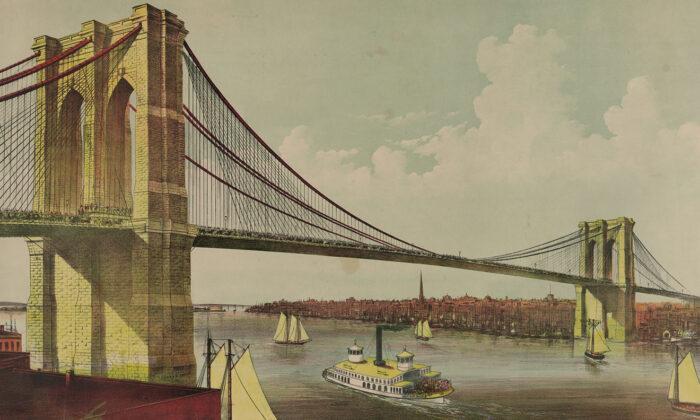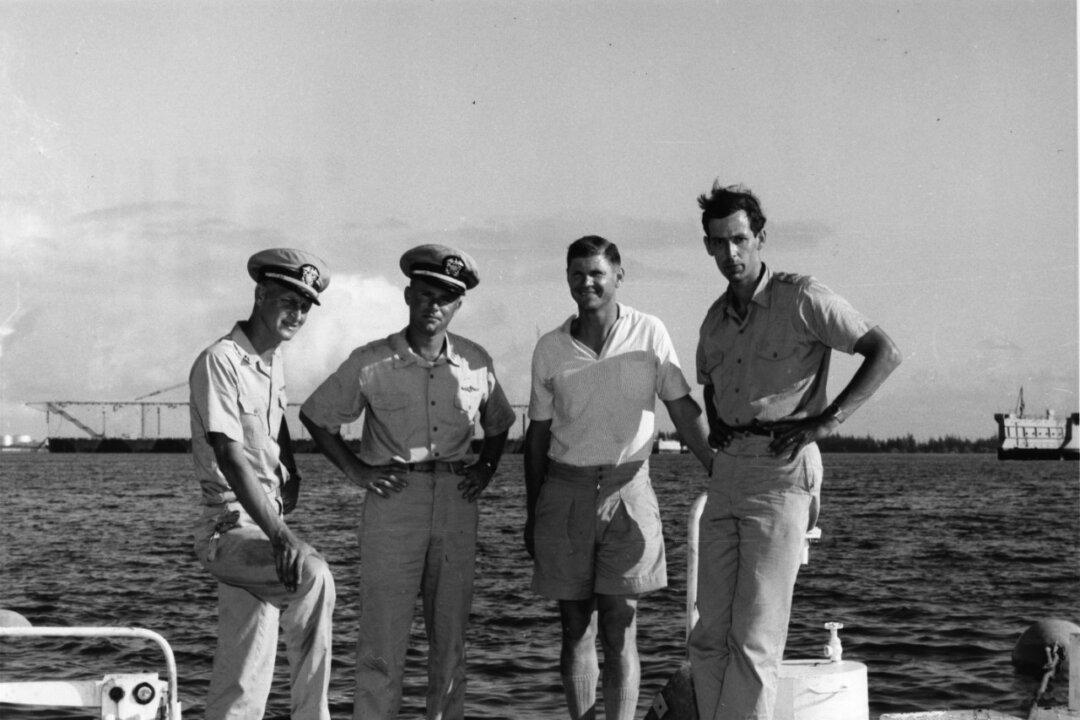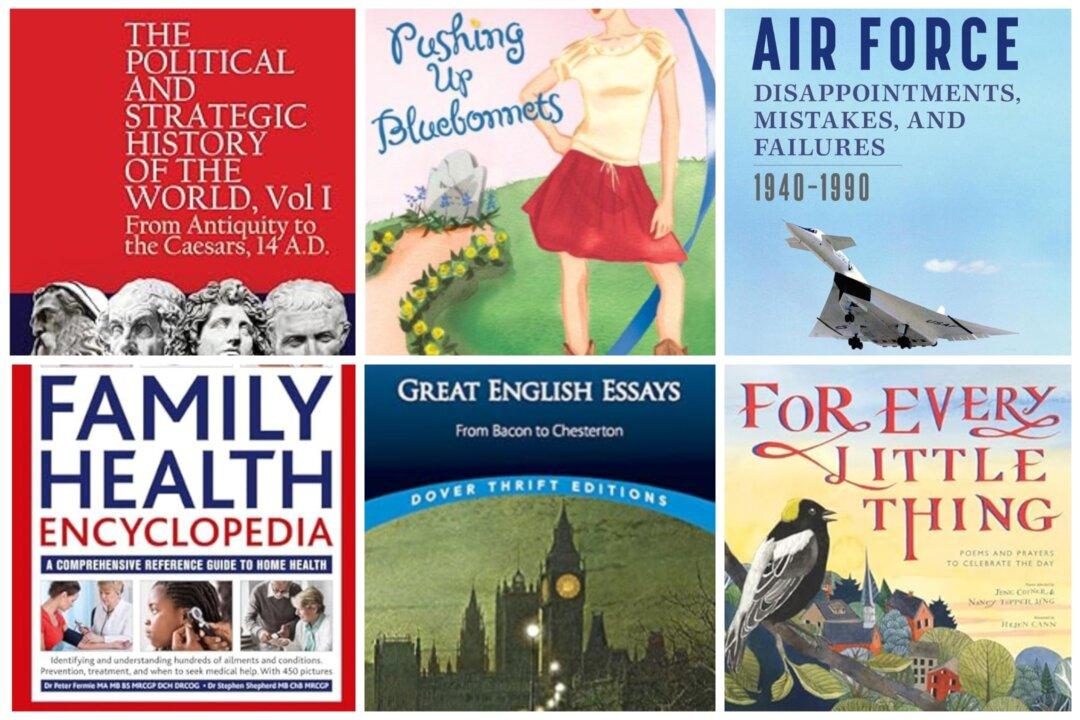Walking in His Father’s Footsteps
Washington Augustus Roebling (1837–1926) was the eldest son of the world famous suspension bridge builder, John Augustus Roebling (who was discussed last week), and he was being primed to walk in his father’s footsteps.Upon graduation in 1857, he began working with his father on bridges and at the family’s wire rope business in Trenton.

War and Love
When the Civil War broke out, Washington joined the Union Army as part of the New York State Militia. His engineering experience greatly assisted the Union Army logistically. During his service, he oversaw the construction of two suspension bridges: one across the Rappahannock River and another at Harper’s Ferry across the Shenandoah River.His military exploits did not end there. He was aide-de-camp to Brig. Gen. Gouverneur K. Warren during the Battle of Gettysburg. Washington, spying from an elevated position in an air balloon, was actually the first to spot the movements of Confederate Gen. Robert E. Lee’s troops toward Gettysburg. He reported these movements directly to Maj. Gen. George Meade, who commanded the Army of the Potomac.
During the course of the famous battle, Washington’s commanding officer, Warren, was the first to recognize the importance of the elevated Little Round Top. He sent troops to defend the position, with Washington being one of the soldiers to place the first cannon on the hill. The decision ensured the Union held its position. Warren was promoted to major general and is considered the “Hero of Little Round Top.” Washington earned three brevets for his conduct.
In 1864, during a military ball, Washington met Warren’s younger sister, Emily. The two immediately fell in love and continued a constant correspondence into the following year. On Jan. 1, 1865, Washington was honorably discharged and received the rank of colonel. Later that month, he and Emily married.

Back to Work
Washington rejoined his father, and was given control over the completion of the Covington-Cincinnati Bridge, a suspension bridge that crossed the Ohio River from Covington, Kentucky to Cincinnati. It was later be renamed the John A. Roebling Bridge. While he completed the project, which was the world’s longest suspension bridge at the time, his father was preparing for his greatest work yet.Confronting Tragedies
When Washington returned to the States, he joined his father to help survey, discuss the plans, and prepare for the historical undertaking that would bridge Manhattan and Brooklyn. In the summer of 1869, however, disaster struck. John was hit by an errant ferry boat that crushed his right toes. He underwent surgery to remove the toes, but within a month, tetanus had set in and John was dead.Before John died, he informed the city officials and the board of the New York Bridge Company that his son was more than capable of completing the project. The 32 year-old was made chief engineer.
The design of the bridge called for two 276.5-foot granite towers to uphold the East River bridge. In order to support the towers, caissons were required. Caissons were open bottom boxes lowered into the water. Air was pumped into the boxes, which kept the water out. This allowed workers to descend into the boxes to remove the silt and sand. As the unstable ground was removed, the caissons lowered until they reached rock bottom. Washington often supervised the project from inside the caissons.
The caisson reached a depth of 44.5 feet on the Brooklyn side and 78.5 feet on the Manhattan side. Unfortunately, the danger of working in caissons—such as the change in atmospheric pressure—was unknown at the time. As workers descended and ascended the caissons, they developed decompression sickness, also known as “the bends.”
During the first year, a fire in the Brooklyn caisson took several days to put out. Washington spent those days below helping put out the fire. When he returned to the surface, he was struck with “the bends.” It took time to recover. While working in the depths during 1872, his decompression sickness returned, leading to his collapse. By the end of the year, his affliction had become so bad that he was confined to his home, practically crippled, highly sensitive to sound and light, and in constant, extreme pain.
Construction in the caissons cost the lives of 20 men, and left many more with varying degrees of decompression sickness. The bridge project, however, was still in its early stages.

Emily’s Will
Washington’s absence from the construction site became noticeable, and discussions of replacing him as chief engineer began. Emily had been eagerly attentive to the project, and Washington had been equally eager to share all the information with her. When her husband was struck with “the bends,” she conveyed his messages to the project engineers. She also began studying engineering and learning everything she could about the project. She was determined to keep her husband on as chief engineer.The Completed Bridge

The Great East River Suspension Bridge, as it was then called, took a total of 14 years to complete and was the largest suspension bridge in the world. Its total length, along with its approaches, is approximately 6,000 feet, with its center span stretching 1,595 feet. The clearing under the bridge is 135 feet at its center. The four cables stretching along the bridge contain more than 14,000 miles of steel wire, weighing nearly 3,500 tons.
When the bridge opened on May 24, 1883, Emily Warren Roebling was given the honor of being the first person to walk across it. She accepted the honor, but with the caveat that the bridge’s engineers join her.
The opening ceremony, which Washington sadly could not attend, was met with great fanfare. Approximately 50,000 people attended the ceremony. Among those were President Chester A. Arthur, who ceremonially opened the bridge with a speech. Emily rode with President Arthur across the bridge, followed by a parading crowd of bands, citizens, and local politicians. Part of the celebration included gala dinners and approximately 14 tons of fireworks.
John and Washington Roebling were honored with bronze plaques on the bridge. Nearly 70 years later, a plaque honoring Emily was placed on the bridge.
The Great East River Suspension Bridge was given several names: The Great Bridge and The Eighth Wonder of the World. But it is the name of The Brooklyn Bridge which has endured.








